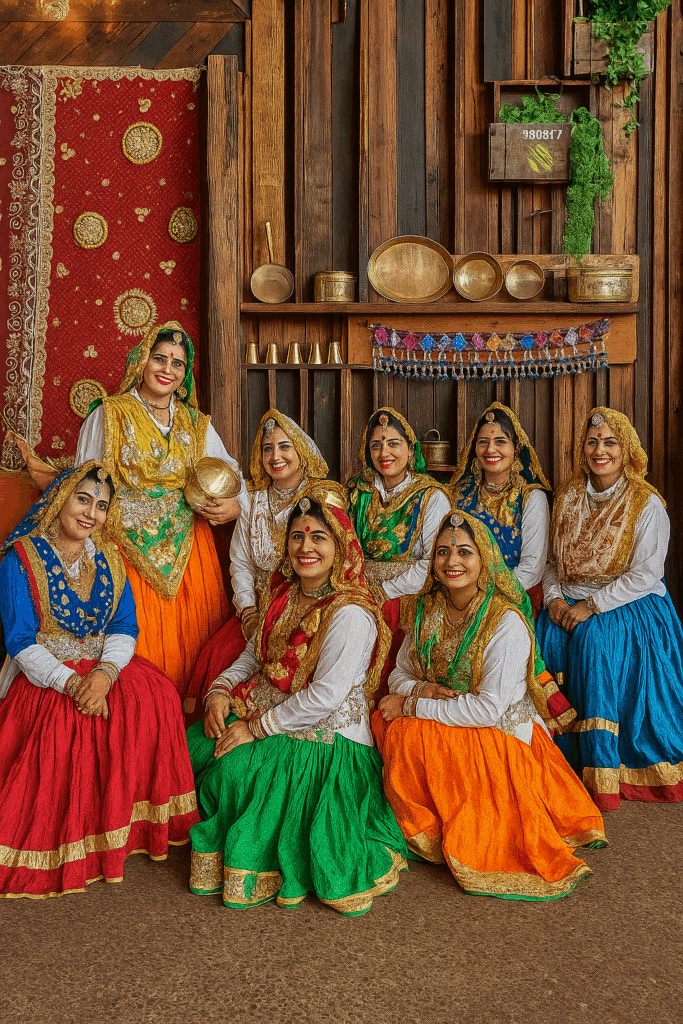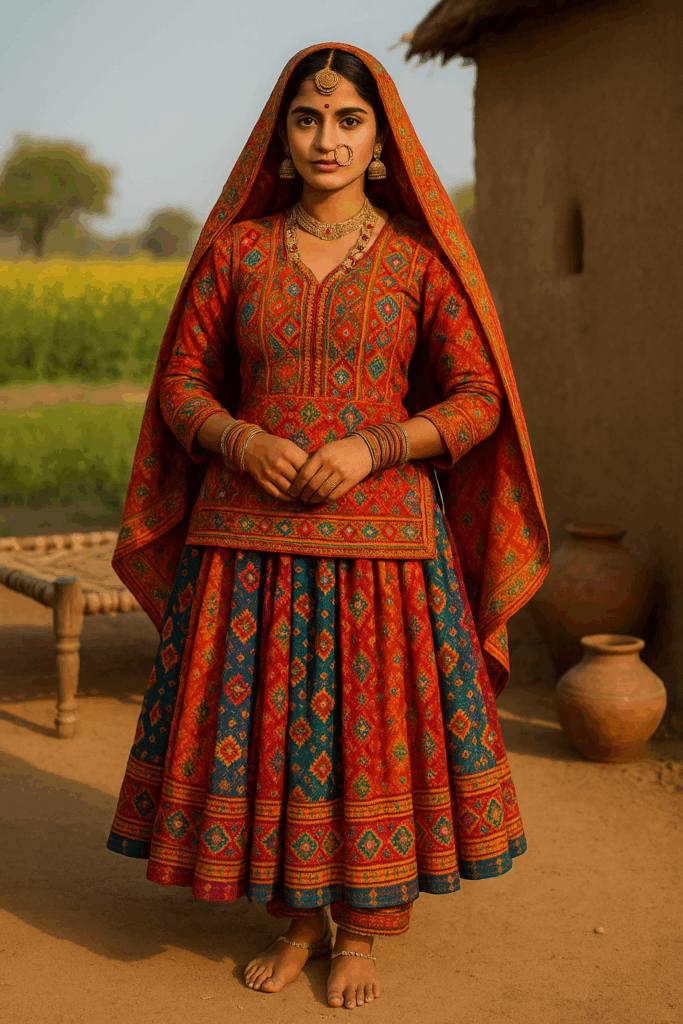Haryana, the state famous for its fertile richness and agricultural past, its rich folk music and dance heritage, its earthy beauty and rural charm, also carries a special and lovely traditional attire. Intimately connected with its rural life, countryside lifestyle, and values, Haryanvi attire is more than just a body covering — it’s a pride language, modesty language, and tradition language.
For women, the Haryana traditional attire comprises three components — ghagra (long flared skirt), kameez (blouse/top), and the odhani or dupatta. The ghagra, typically crafted in cotton or khaddar fabric, is pleated and wide and is designed to enable movement as the skirt sways gracefully. Along with a plain or embroidered kameez, the outfit is completed with a large, typically colored odhani draped over the head and shoulders — a gesture of respect and humility.
These odhanis are not only functional, but most of them are actually pretty and richly embellished with gota-patti, mirror work, or thread embroidery, and reflect the social or nuptial status of the woman who dons them. Dazzling shades like red, orange, green, and blue predominate the palette, capturing the vibrant energy of Haryanvi rural life.
Women belonging to older age groups in most places still retain damaan, a traditional style of the ghagra, along with angiya (a close-fitting bodice) and odhani. The impact of times of today cannot erase these from rural Haryana, and on occasions of festivals, weddings, and dance performances.

Traditional wear for men in Haryana, though simple, is as culturally rich. The traditional wear includes a dhoti or chadra, a kurta, and a turban (pagdi). The pagdi is a symbol of dignity and varies in design within communities and age groups. A woollen shawl or blanket (loi) is used over the clothing during winter.
Jewellery also has a strong application in the attire of Haryanvis. Women have been traditionally adorned with borla (forehead ornament), kanthi mala (neck jewelry), bichhuwa (toe rings), jhanjhar (anklet), and heavy silver bangles. These adornments are inherited and reflect emotional and aesthetic value.
Despite the age of modernization and the increasing popularity of Western wear in urban Haryana, there is a standing ovation for traditional dress at weddings, fairs, folk festivals, and festivals like Teej, Holi, and Gangaur. It is a beaming expression of cultural identity and timeless beauty.
In a constantly changing world, Haryanvi traditional attire keeps us reminded of how strongly the fabric of culture is ingrained. It’s not merely stitched apparel — it’s an embroidered story in threads, a heritage of simplicity, strength, and beauty passed down through generations.
Recommended1 recommendationPublished in Jewelry, Our Fashion Passion



